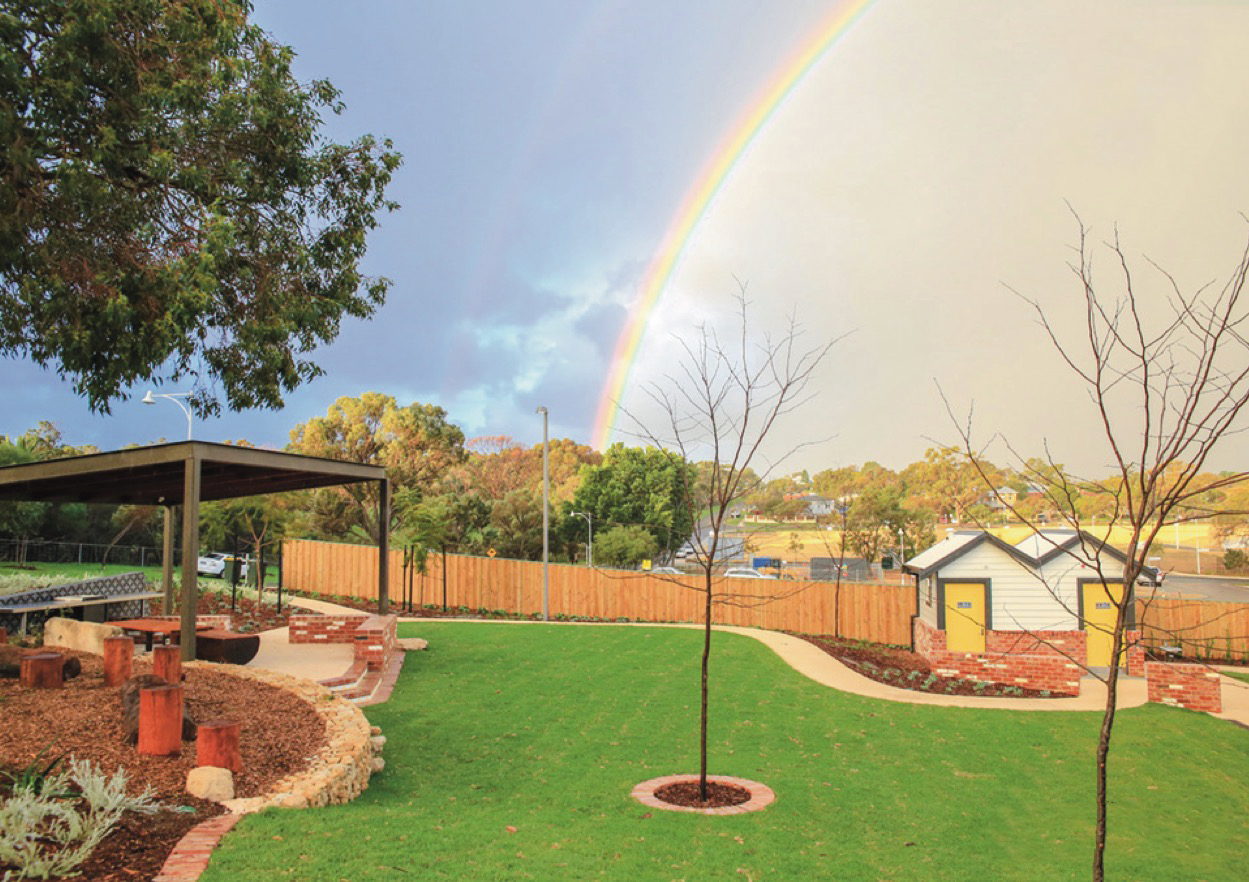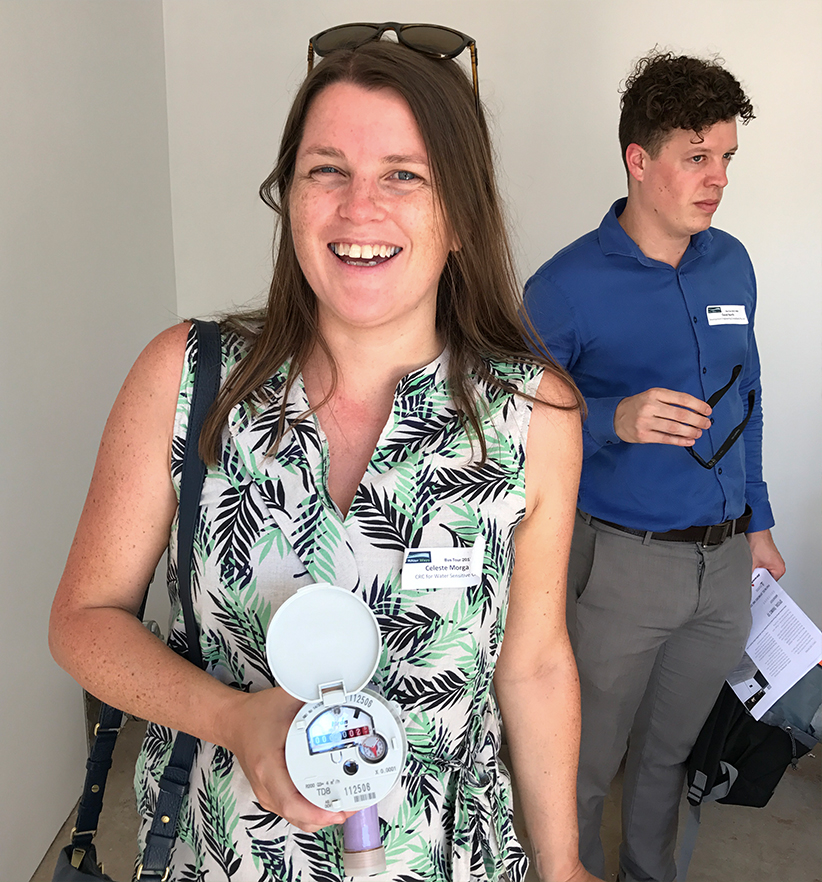Demonstration bus tour showcases water sensitive development
Attendees of a New WAter Ways tour experienced water, energy, and social innovations in Western Australia.
Living within the limits of our planet’s natural resources is a hot topic for future communities. But what might life look like in places designed with water, energy, community, and biodiversity at the forefront?
With support from CRCWSC Partners, Western Australia’s White Gum Valley (WGV) precinct has captured exactly such a “One Planet Living” notion in its use of water sensitive urban design alongside social and environmental innovations – and those on board a recent New WAter Ways’ capacity building bus tour got to experience the results up close.
The February 2017 demonstration tour showcased LandCorp’s 2.8 ha precinct, located in the City of Fremantle. Elements of focus included a public open space with community bore infrastructure, a reengineered stormwater basin, innovative housing typologies known as Gen Y Housing and SHAC (affordable housing for artists and creatives), and leafy streetscapes grown from tree retention and integrated stormwater assets. Here, integrating water sensitive urban design into a residential infill project has made the most of retrofitting a stormwater basin to boost aesthetic, functional, and biodiversity values. Within properties, green pipes (rainwater reuse for toilet and laundry), purple pipes (local borewater for irrigation), and smart meters abound as visible signs of sensitive water use. Further social innovations appear in the Gen Y house, artists’ housing, and through initiatives that foster community ownership – such as men’s shed projects (like crafting wooden bollards and artist sign posts from salvaged trees) that enrich the landscape.


The event was organised by New WAter Ways, the WA capacity building program for water sensitive urban design, with support from the CRCWSC and representatives from Josh Byrne and Associates. The developer, LandCorp, provided detailed insight into the design philosophy and lessons learnt along the way. The CRCWSC’s Celeste Morgan (Project D1.4 Leader) joined the tour as part of her use of WGV as a case study.
Attendees included State and local governments, service providers, consultants, and developers. Many CRCWSC partners were involved in the project including LandCorp, the Department of Water, and Water Corporation. In addition, the CRCWSC contributed financial support for the smart metering that monitors water usage in WGV.